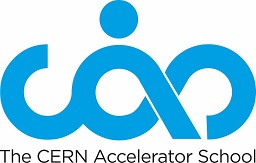Speaker
Description
Cryogenics is the field of physics and engineering that deals with the production and effects at very low temperatures. The Large Hadron Collider (LHC) is the largest cryogenic system in the world and one of the coldest places on Earth. The LHC's superconducting magnets operate at a temperature of 1.9 K immersed in pressurized superfluid helium (He II@ 1.3 bar) and the accelerating cavities at 4.5 K in saturated helium (He I). Cooling enables superconductivity for accelerators and detectors as well as to study low temperature properties of materials and components. Other cryogenic fluids are used at CERN to operate particle detectors with e.g. liquid Argon or liquid Krypton. The lecture is giving an introduction to the cryogenics approach of cooling equipment to low temperatures with the goal to enable superconductivity or reducing the thermal background in measurement setups. Heat transfer mechanisms and cooling techniques are discussed, typical cryostat designs with the main influencing parameters are introduced, followed by the cooling scheme of the LHC with its sophisticated distribution system. The lecture will cover the unique features of superfluid helium cooling and how it is applied on the example of the LHC.
